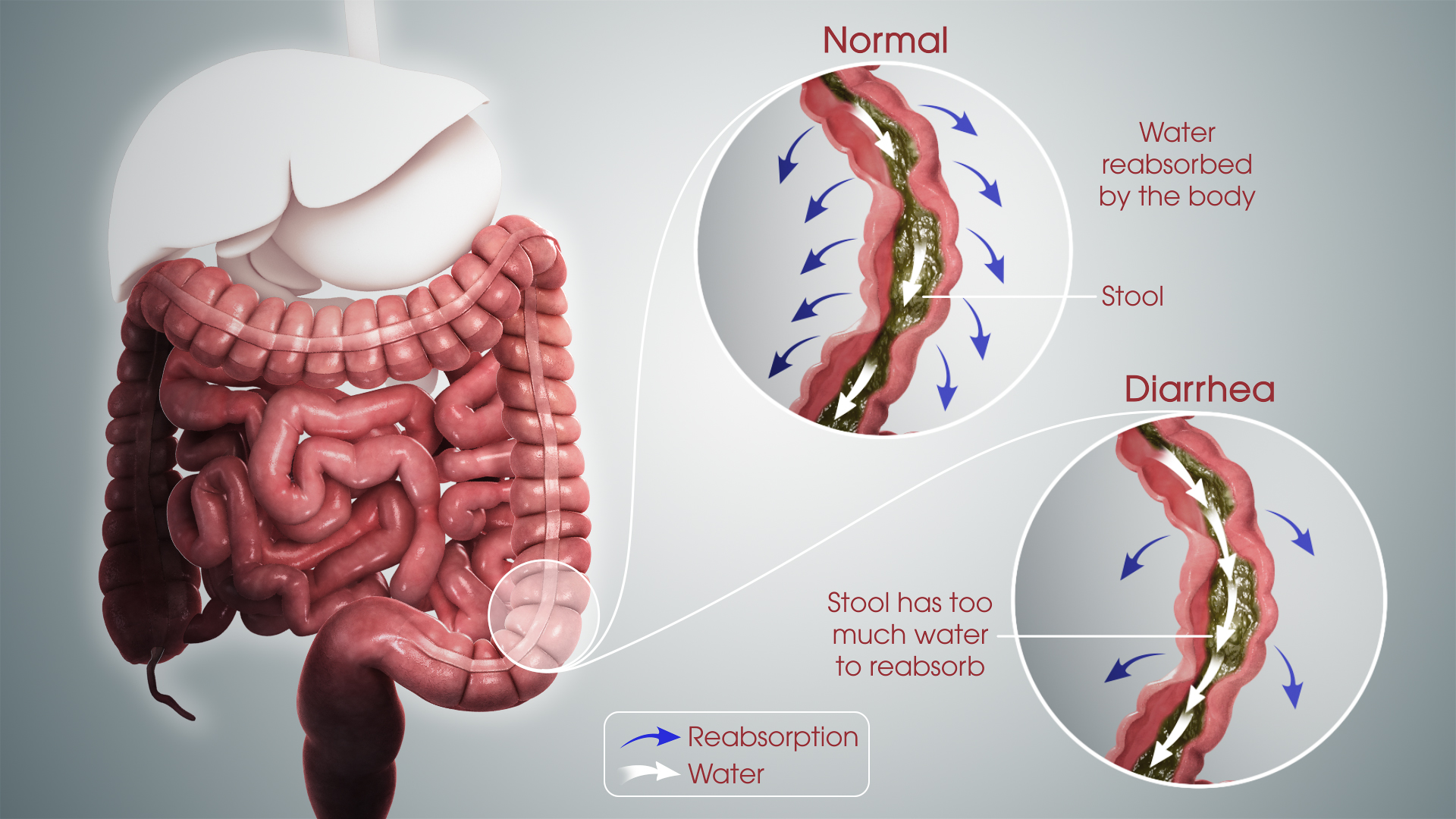Diarrhea, as defined by WHO, is a condition of having at least three loose or liquid stools each day. It usually results in dehydration due to fluid loss.
Diarrhea is basically an intestinal infection (also known as gastroenteritis) that can be caused by either virus, bacteria or parasite. These microorganisms are often acquired from contaminated food or water or another infected person.
Diarrhea can be acute or chronic.
Acute diarrhea is a fairly common condition when there is an abnormally frequent semisolid or fluid fecal matter discharge from the bowel, lasting less than two weeks. This definition is given by the World Gastroenterology Organisation. Acute diarrhea is most commonly due to viral gastroenteritis with rotavirus, which accounts for 40% of cases in children under 5.
Chronic diarrhea refers to diarrhea that lasts for at least four weeks. It’s usually an outcome of an intestinal disease or disorder, such as celiac disease or Crohn’s disease.
1.7- 5 billion diarrhea cases occur per year. Most common in developing countries, young children get diarrhea on an average three times a year.
Pathophysiology

Secretory
In secretory diarrhea there is either an increase in the active secretion, or inhibition of absorption. However, there is no structural damage.
Cholera infection stimulates the secretion of negatively charged chloride ions. Sodium and water present in the secretion, help maintain the charge balance in the gastrointestinal tract. In this type of diarrhea, intestinal fluid secretion is isotonic with plasma.
Exudative
Exudative diarrhea occurs with inflammatory bowel diseases, such as Crohn's disease or ulcerative colitis, and other severe infections such as E.coli or other forms of food poisoning. The stool contains blood and pus.
Inflammatory
In inflammatory diarrhea, there is damage to the mucosal lining, leading to a passive loss of protein-rich fluids and a decreased ability to absorb these lost fluids. It can be caused by bacterial infections, viral infections, parasitic infections, or autoimmune problems such as inflammatory bowel diseases. It can also be caused by tuberculosis, colon cancer, and enteritis.
Dysentery
Visible blood in the stools as a result of bowel tissue invasion, is indicative of dysentery. It is often a symptom of Shigella, Entamoeba histolytica, or Salmonella infection.
Besides microbial infection, certain non-infectious factors including lactose intolerance, irritable bowel syndrome, non-celiac gluten sensitivity, celiac disease, inflammatory bowel disease, hyperthyroidism, bile acid diarrhea and even certain drugs (laxatives), may also lead to diarrhea.
Improper digestion (in case of pancreatic disease or celiac disease), leaves the nutrients in the lumen that draw water into the bowel. This condition is called osmotic diarrhea. Laxatives, too much magnesium or vitamin C or undigested lactose may also cause osmotic diarrhea. A lactose intolerant person can have difficulty absorbing lactose after an extraordinarily high intake of dairy products. Similarly, those who have fructose malabsorption can acquire diarrhea after excessive sugar intake (sugar alcohols such as sorbitol). High-fructose foods that also have a high glucose content are more absorbable and less likely to cause diarrhea. Stool output is proportional to the intake of the unabsorbable substrate and is usually not massive. Diarrheal stools promptly regress with discontinuation of the offending nutrient.
Treatment and Management
-
The major symptom of diarrhea- dehydration- can be managed by replacing lost fluid and salts in the body. Usually the rehydration therapy is oral, but in severe cases, it may be performed intravenously.
-
Antidiarrheal medications can reduce diarrheal output and zinc supplement is effective in children. Over-the-counter (OTC) antidiarrheal medicines are also available. Loperamide preparations are antimotility drugs that reduce stool passage. This allows more fluid to be absorbed into your body, and hence, produce more formed stools. Bismuth subsalicylate compounds reduce diarrheal stool output in adults and children. These drugs keep diarrhea-causing bacteria and viruses from growing in the stomach and intestines.
-
Certain dietary modifications can bring back the system to normal. Clear liquids and fibrous foods, rich in sodium or potassium (soups, sports drinks, broths, potatoes, bananas, oatmeal, rice) aid speedy recovery from diarrhea, while creamy, fried and sugary foods are known to worsen the condition.








